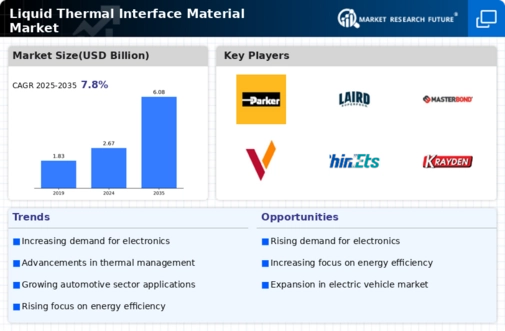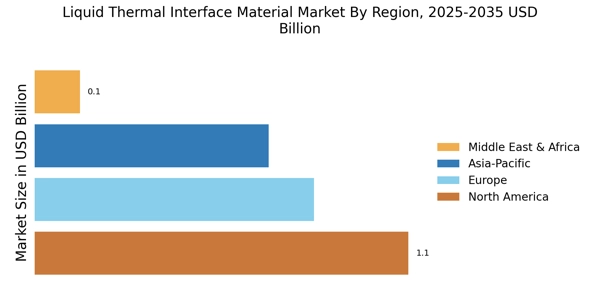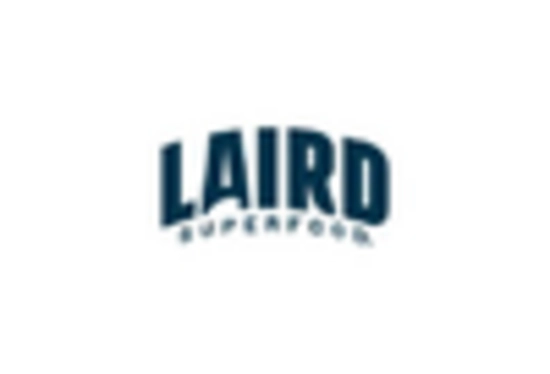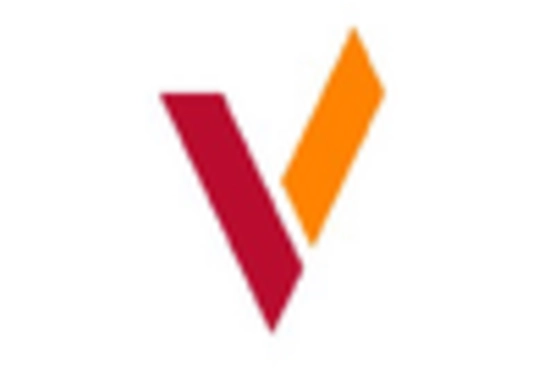Growth in Renewable Energy Sector
The Liquid Thermal Interface Material Market is also experiencing growth due to the expansion of the renewable energy sector. As the world shifts towards sustainable energy sources, the demand for efficient thermal management in solar panels and wind turbines is increasing. Liquid thermal interface materials are essential in these applications, as they help manage heat dissipation and improve the efficiency of energy conversion processes. The renewable energy market is projected to grow at a robust rate, with investments in solar and wind technologies driving the need for advanced thermal management solutions. This trend presents opportunities for manufacturers to develop specialized liquid thermal interface materials that cater to the unique requirements of renewable energy applications.
Expansion of Electric Vehicle Market
The Liquid Thermal Interface Material Market is significantly influenced by the expansion of the electric vehicle (EV) market. As the automotive industry shifts towards electrification, the demand for efficient thermal management solutions in EVs is surging. Liquid thermal interface materials play a crucial role in managing the heat generated by batteries and power electronics, ensuring optimal performance and safety. The EV market is expected to witness a growth rate exceeding 20% annually, which in turn propels the demand for advanced thermal interface materials. This growth presents opportunities for manufacturers to innovate and develop specialized products tailored for the unique thermal challenges posed by electric vehicles, thereby enhancing their market presence.
Technological Innovations in Material Science
The Liquid Thermal Interface Material Market is benefiting from technological innovations in material science. Advances in nanotechnology and polymer chemistry are leading to the development of new liquid thermal interface materials with enhanced properties. These innovations are crucial for meeting the evolving demands of high-performance electronics, where traditional materials may fall short. The introduction of materials with improved thermal conductivity, lower viscosity, and better adhesion properties is likely to drive market growth. As manufacturers continue to invest in research and development, the Liquid Thermal Interface Material Market is expected to see a surge in innovative products that can address the complex thermal management challenges faced by various industries.
Rising Demand for Efficient Thermal Management Solutions
The Liquid Thermal Interface Material Market is experiencing a notable increase in demand for efficient thermal management solutions. As electronic devices become more compact and powerful, the need for effective heat dissipation has intensified. This trend is particularly evident in sectors such as consumer electronics, automotive, and telecommunications, where overheating can lead to performance degradation and device failure. The market for thermal interface materials is projected to grow at a compound annual growth rate of approximately 8% over the next few years, driven by the increasing complexity of electronic systems. Manufacturers are focusing on developing advanced liquid thermal interface materials that offer superior thermal conductivity and reliability, thereby enhancing the overall performance of electronic components.
Increasing Focus on Miniaturization of Electronic Components
The Liquid Thermal Interface Material Market is being driven by the increasing focus on the miniaturization of electronic components. As devices become smaller and more powerful, the thermal management requirements become more stringent. This trend is particularly prominent in sectors such as telecommunications and computing, where high-performance components are densely packed. The market for liquid thermal interface materials is projected to benefit from this trend, as manufacturers seek materials that can provide effective thermal conductivity in limited spaces. The demand for innovative solutions that can accommodate the thermal challenges associated with miniaturized electronics is likely to propel market growth, with an anticipated increase in product development and research efforts.


















Leave a Comment